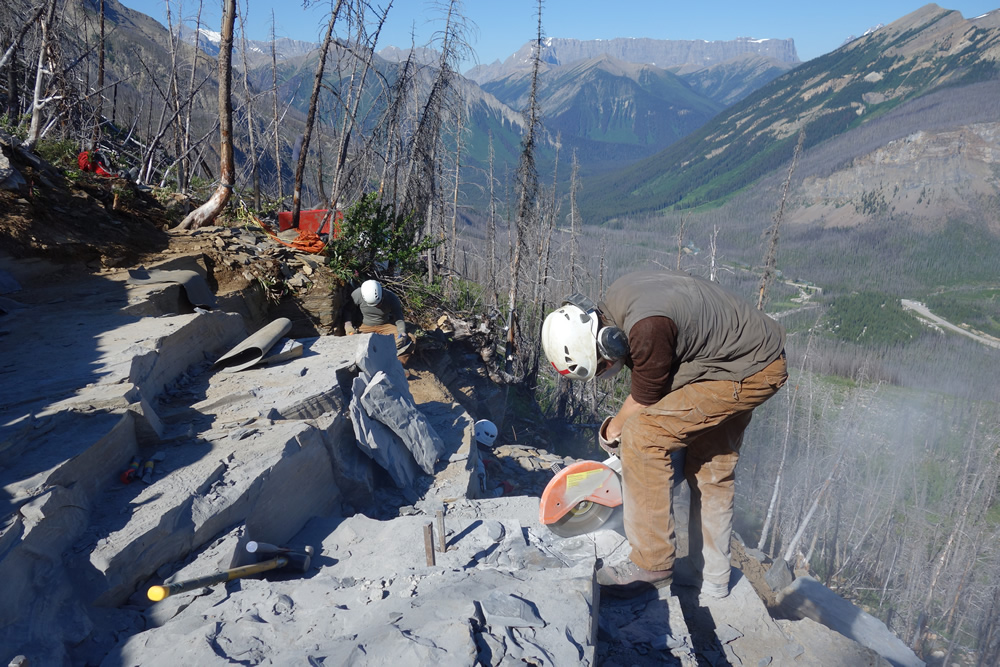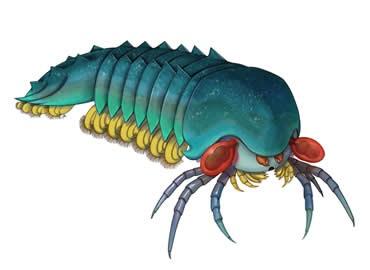Half-a-billion-year-old tiny predator points to the rise of scorpions and spiders

Cédric Aria at Marble Canyon quarry site in Kootenay National Park during ROM fieldwork expedition in the summer of 2014. Image: Jean-Bernard Caron | © Royal Ontario Museum.
Palaeontologists working on the world-renowned Burgess Shale have revealed a new species, Mollisonia plenovenatrix, which they describe as the oldest member of a group of animals called chelicerates. The discovery places the origin of this vast group of animals — over 115,000 species including horseshoe crabs, scorpions and spiders — to a time more than 500 million years ago, near the beginning of the Cambrian Period.
The findings are published today in Nature.
Mollisonia plenovenatrix would have been a fierce predator — for its size. As big as a thumb, the creature boasted a pair of large egg-shaped eyes and a “multi-tool head” with long walking legs, as well as numerous pairs of limbs that could altogether sense, grasp, crush and chew.
But, most importantly, the new species also had a pair of tiny pincers in front of its mouth, called chelicerae. These appendages give the name to the chelicerates which use them to kill, hold and, sometimes, cut their prey.

Reconstruction of Mollisonia plenovenatrix, by Joanna Liang. Mollisonia was only about 2.5 cm long.
Photo credit: Joanna Liang.
“Before this discovery, we couldn’t pinpoint the chelicerae in other Cambrian fossils, although some of them clearly have chelicerate-like characteristics,” says Cédric Aria, lead author of the Nature study and a recent graduate of the PhD program in the Department of Ecology & Evolutionary Biology in the Faculty of Arts & Science at the University of Toronto. “This key feature, this ‘coat of arms’ of the chelicerates, was still missing.”
Other features of this fossil, including back limbs likened to gills, further suggest that Mollisonia’s body already resembled those of modern species and was not some primitive version of a chelicerate.
“Chelicerates have what we call either book gills or book lungs,” explains Aria, a member of the Royal Ontario Museum’s Burgess Shale expeditions since 2012 and currently a post-doctoral fellow at the Nanjing Institute of Geology and Palaeontology in China. “They are respiratory organs made of many collated thin sheets, like a book. This greatly increases surface area and therefore gas exchange efficiency. Mollisonia had appendages made up with the equivalent of only three of these sheets, which probably evolved from simpler limbs.”
”It is the first time that evidence of the limbs and other soft tissues of this type of animal are described, which were key to revealing its affinity,” said co-author Jean-Bernard Caron, associate professor in the Departments of Ecology & Evolutionary Biology and Earth Sciences at U of T, and Aria’s PhD supervisor.
Full story:


